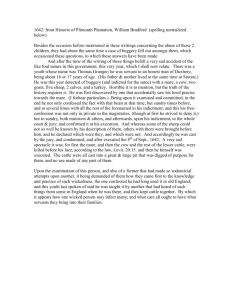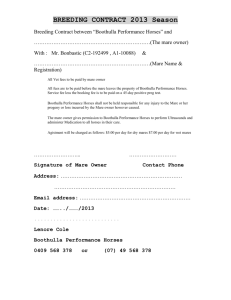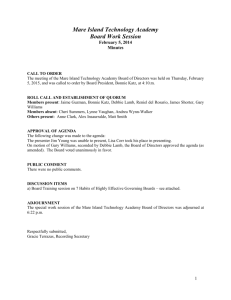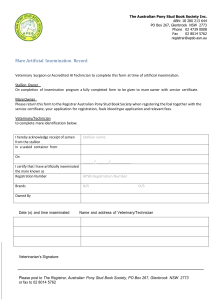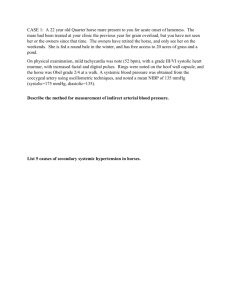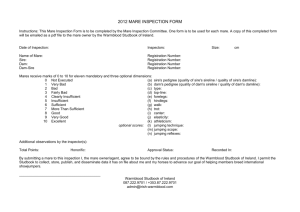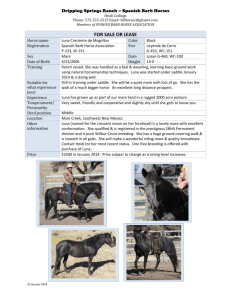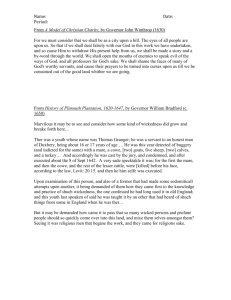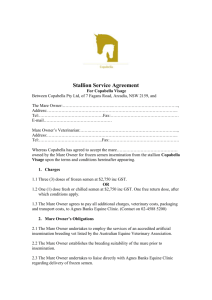InOMN 2013 Suggested Observing List On October 12, 2013, the
advertisement
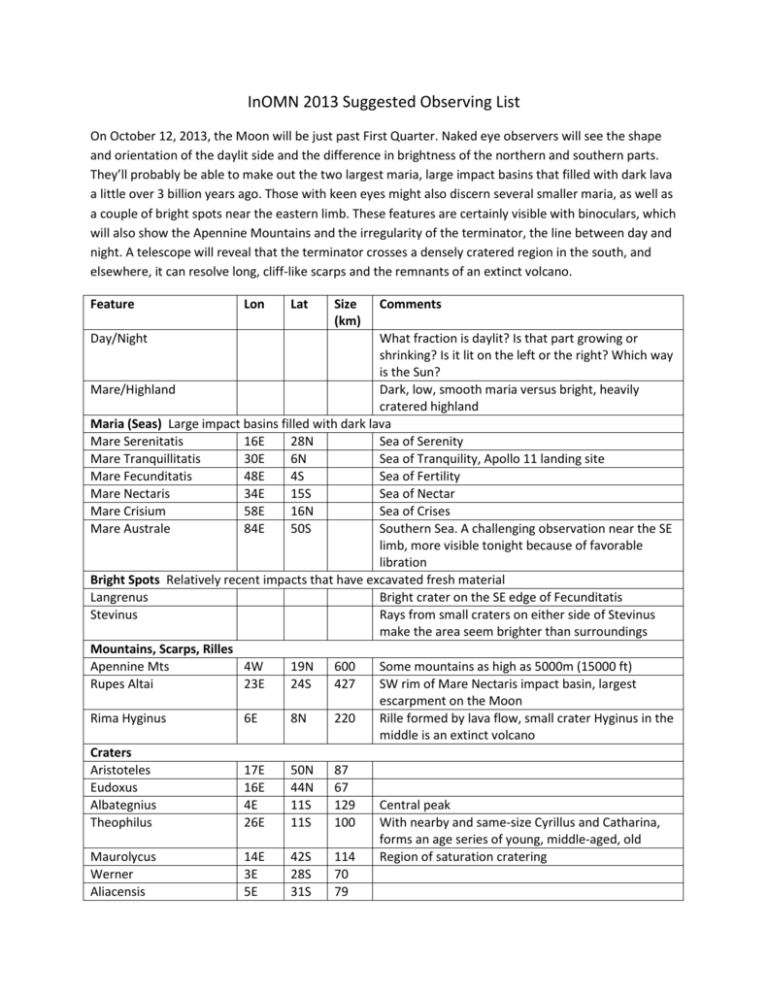
InOMN 2013 Suggested Observing List On October 12, 2013, the Moon will be just past First Quarter. Naked eye observers will see the shape and orientation of the daylit side and the difference in brightness of the northern and southern parts. They’ll probably be able to make out the two largest maria, large impact basins that filled with dark lava a little over 3 billion years ago. Those with keen eyes might also discern several smaller maria, as well as a couple of bright spots near the eastern limb. These features are certainly visible with binoculars, which will also show the Apennine Mountains and the irregularity of the terminator, the line between day and night. A telescope will reveal that the terminator crosses a densely cratered region in the south, and elsewhere, it can resolve long, cliff-like scarps and the remnants of an extinct volcano. Feature Day/Night Lon Lat Size (km) Comments What fraction is daylit? Is that part growing or shrinking? Is it lit on the left or the right? Which way is the Sun? Mare/Highland Dark, low, smooth maria versus bright, heavily cratered highland Maria (Seas) Large impact basins filled with dark lava Mare Serenitatis 16E 28N Sea of Serenity Mare Tranquillitatis 30E 6N Sea of Tranquility, Apollo 11 landing site Mare Fecunditatis 48E 4S Sea of Fertility Mare Nectaris 34E 15S Sea of Nectar Mare Crisium 58E 16N Sea of Crises Mare Australe 84E 50S Southern Sea. A challenging observation near the SE limb, more visible tonight because of favorable libration Bright Spots Relatively recent impacts that have excavated fresh material Langrenus Bright crater on the SE edge of Fecunditatis Stevinus Rays from small craters on either side of Stevinus make the area seem brighter than surroundings Mountains, Scarps, Rilles Apennine Mts 4W 19N 600 Some mountains as high as 5000m (15000 ft) Rupes Altai 23E 24S 427 SW rim of Mare Nectaris impact basin, largest escarpment on the Moon Rima Hyginus 6E 8N 220 Rille formed by lava flow, small crater Hyginus in the middle is an extinct volcano Craters Aristoteles 17E 50N 87 Eudoxus 16E 44N 67 Albategnius 4E 11S 129 Central peak Theophilus 26E 11S 100 With nearby and same-size Cyrillus and Catharina, forms an age series of young, middle-aged, old Maurolycus 14E 42S 114 Region of saturation cratering Werner 3E 28S 70 Aliacensis 5E 31S 79 Walther Plato Ptolemaeus Alphonsus Arzachel Thebit Purbach Deslandres Orontius Maginus Moretus Apollo Landing Sites 11 15 16 17 1E 9W 2W 3W 2W 4W 2W 5W 4W 6W 6W 33S 52N 9S 13S 18S 22S 26S 33S 40S 50S 71S 24E 4E 16E 31E 1N 26N 9S 20N 136 109 153 119 96 57 118 256 122 194 114 Central peak Region of saturation cratering Central peak Tranquillitatis Hadley-Apennine Descartes Highlands Taurus-Littrow Valley

